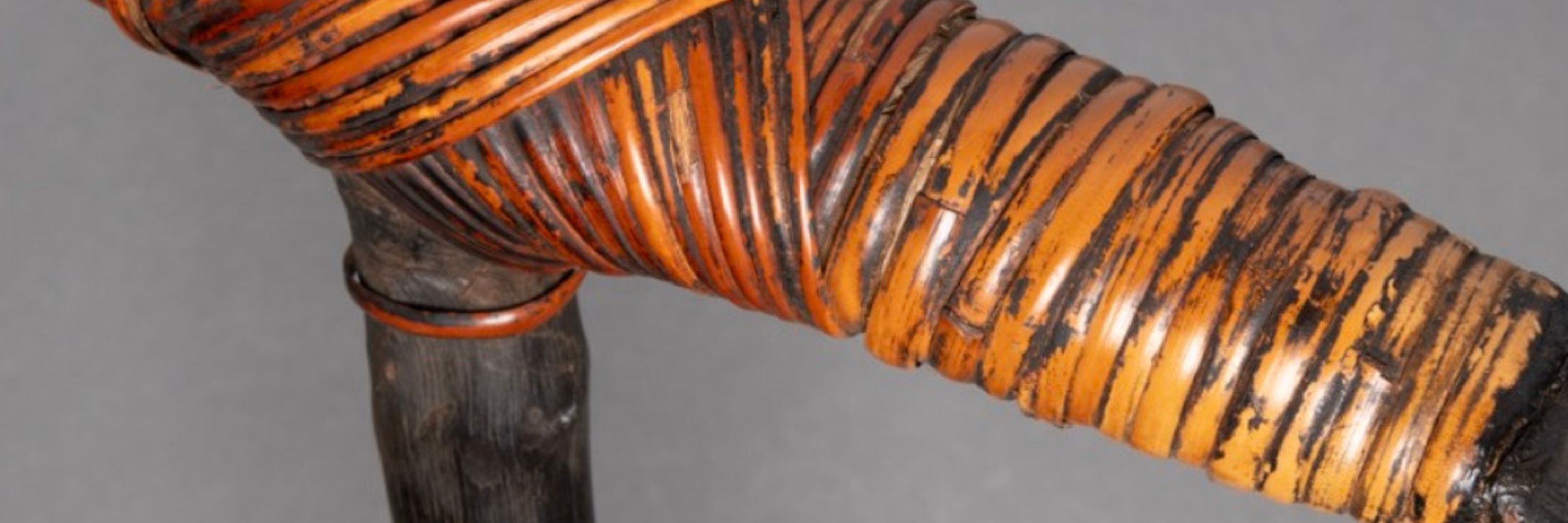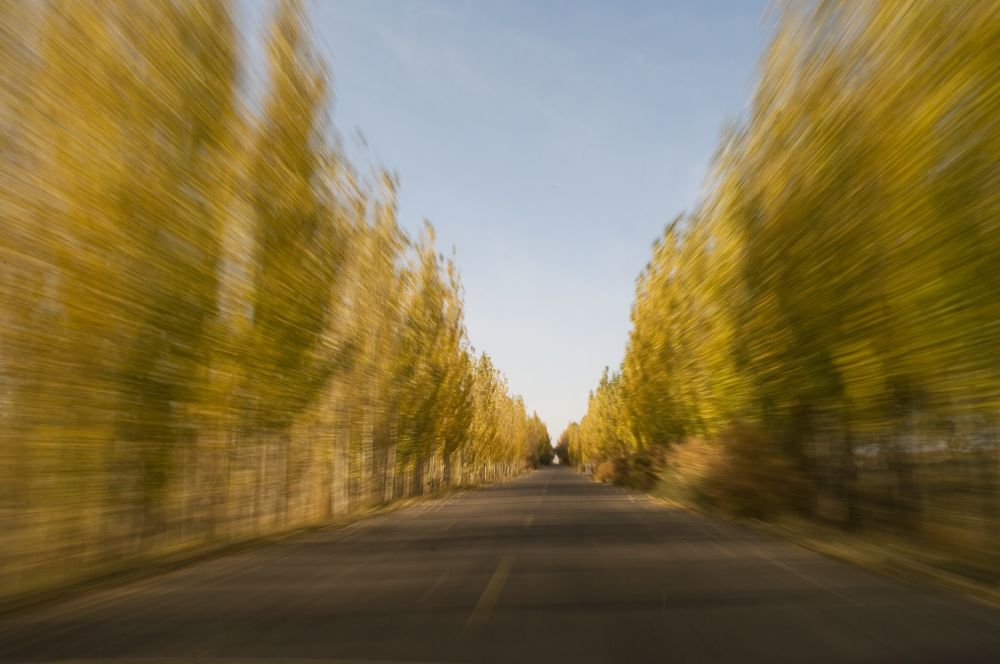
Chris Buckley
@chrisbuckley.bsky.social
Anthropologist with interests in cultural evolution, phylogenetics, classical methods, weaving. Interface of archaeology and ethnography. Author of "Stone and Fiber: Daily life in the Baliem valley, Papua".
Three from the roads near Dunhuang, October 2011



November 11, 2025 at 4:30 AM
Three from the roads near Dunhuang, October 2011
Nomads waiting for a bus, Zoige grasslands, around 1998

November 3, 2025 at 5:28 AM
Nomads waiting for a bus, Zoige grasslands, around 1998
Tibetan monk's robes, in Langmusi, Gansu-Sichuan border region, around 2000

November 3, 2025 at 5:25 AM
Tibetan monk's robes, in Langmusi, Gansu-Sichuan border region, around 2000
Scanning some old Kodachromes for a project. These are Tibetan monks at a summer camp in Zoige province, on the Sichuan-Gansu border, playing football, around 25 years ago

November 1, 2025 at 6:29 PM
Scanning some old Kodachromes for a project. These are Tibetan monks at a summer camp in Zoige province, on the Sichuan-Gansu border, playing football, around 25 years ago
don't know, from this period ... but here is a similar effect in a Tibetan apron from the 1960s ...

October 26, 2025 at 10:42 PM
don't know, from this period ... but here is a similar effect in a Tibetan apron from the 1960s ...
Guillaume Jacques and I have collaborated to survey spindle whorls and the origins of weaving in East Asia ... lots of new stuff in this preprint ... a novel method for processing spindle whorl archaeological data, comparison with farming, and new linguistic information ... osf.io/preprints/so...

October 10, 2025 at 3:51 PM
Guillaume Jacques and I have collaborated to survey spindle whorls and the origins of weaving in East Asia ... lots of new stuff in this preprint ... a novel method for processing spindle whorl archaeological data, comparison with farming, and new linguistic information ... osf.io/preprints/so...
Cotton in Burmese amber ... mid-Cretaceous www.researchsquare.com/article/rs-7...

October 7, 2025 at 4:19 PM
Cotton in Burmese amber ... mid-Cretaceous www.researchsquare.com/article/rs-7...
In Berkeley? Come hear me talk about weaving in southeast Asia, the Pacific and the Americas (including a new, unpublished phylogeny). At the Sutardja Dai hall in UC Berkeley, Thursday 9th Oct at 1.40pm, free entry and no need to register. Full program here: indd.adobe.com/view/8a5cf75...


October 6, 2025 at 4:05 PM
In Berkeley? Come hear me talk about weaving in southeast Asia, the Pacific and the Americas (including a new, unpublished phylogeny). At the Sutardja Dai hall in UC Berkeley, Thursday 9th Oct at 1.40pm, free entry and no need to register. Full program here: indd.adobe.com/view/8a5cf75...
Souvenir of my time working for an NGO in Lhasa in the early 2000s. This is a large blanket made by nomadic Tibetans from yak or goat hair. Woven in narrow strips, sewn together

September 28, 2025 at 7:49 PM
Souvenir of my time working for an NGO in Lhasa in the early 2000s. This is a large blanket made by nomadic Tibetans from yak or goat hair. Woven in narrow strips, sewn together
Spotted this boat on Flores. I wonder what it's for?

September 23, 2025 at 3:43 PM
Spotted this boat on Flores. I wonder what it's for?
Arrived today. Naturally I opened it immediately and looked at my own chapter. I like it.

September 18, 2025 at 10:34 PM
Arrived today. Naturally I opened it immediately and looked at my own chapter. I like it.
The Monarch of the Glen (or Point Reyes, at any rate)

September 18, 2025 at 7:30 PM
The Monarch of the Glen (or Point Reyes, at any rate)
the Heta (hunter-gatherers) used them in the same manner as Asmat foragers and Papuan highland farmers, for felling trees, striking the trunk at a steep angle and shaving the trunk inwards gradually. The handles were used as digging sticks.

September 6, 2025 at 10:48 PM
the Heta (hunter-gatherers) used them in the same manner as Asmat foragers and Papuan highland farmers, for felling trees, striking the trunk at a steep angle and shaving the trunk inwards gradually. The handles were used as digging sticks.
and by axe-makers of the European Neolithic. The head is bulbous to resist breakage, slightly back-curving so that the blade contacts the work face rather than the head of the handle ...

September 6, 2025 at 10:48 PM
and by axe-makers of the European Neolithic. The head is bulbous to resist breakage, slightly back-curving so that the blade contacts the work face rather than the head of the handle ...
a form that is the same as that used by the Asmat and some west highland Papuan groups that used axes, such as this example from the Hubula (image from Stone and Fiber: Daily Life in the Baliem valley, Papua) ...

September 6, 2025 at 10:48 PM
a form that is the same as that used by the Asmat and some west highland Papuan groups that used axes, such as this example from the Hubula (image from Stone and Fiber: Daily Life in the Baliem valley, Papua) ...
this is the same as the technique used until recently by coastal Papuans in the Sentani region for making greenstone blades for bridewealth exchanges. Highland Papuans tended to use knapping followed by grinding. The Heta hafted their axes in wooden handles with bulbous heads ...

September 6, 2025 at 10:48 PM
this is the same as the technique used until recently by coastal Papuans in the Sentani region for making greenstone blades for bridewealth exchanges. Highland Papuans tended to use knapping followed by grinding. The Heta hafted their axes in wooden handles with bulbous heads ...
Today I came across Kozak et al's remarkable account of the Heta Indians from the forests of Brazil ("The Heta Indians: Fish in a Dry Pond"), based on information gathered in the 1950s. The Heta made ground stone axes, which they made by pecking and grinding suitable stones ...

September 6, 2025 at 10:48 PM
Today I came across Kozak et al's remarkable account of the Heta Indians from the forests of Brazil ("The Heta Indians: Fish in a Dry Pond"), based on information gathered in the 1950s. The Heta made ground stone axes, which they made by pecking and grinding suitable stones ...
Meanwhile, in Holland

September 4, 2025 at 8:48 PM
Meanwhile, in Holland
Glass beads from the Lake Sentani region on the north coast of Papua, part of bridewealth exchanges. The beads are mostly from China, and include some very old examples (the melon shaped beads). They were brought by trading vessels over the last two millennia. From my book "Stone and Fiber".

August 23, 2025 at 6:54 PM
Glass beads from the Lake Sentani region on the north coast of Papua, part of bridewealth exchanges. The beads are mostly from China, and include some very old examples (the melon shaped beads). They were brought by trading vessels over the last two millennia. From my book "Stone and Fiber".
in contrast, goods in the highland were traded over a few km at most, traders had no knowledge of their origins (for example they were unaware of the existence of the sea). In many ways highlanders were indeed isolated. I compare coastal and highland networks in my book. 3/3

August 23, 2025 at 5:46 PM
in contrast, goods in the highland were traded over a few km at most, traders had no knowledge of their origins (for example they were unaware of the existence of the sea). In many ways highlanders were indeed isolated. I compare coastal and highland networks in my book. 3/3
A weaver's sword (weft beater) in Tengganan, Bali. The close-up view shows the grooves that develop at the striking edge from years of use. This feature is not present on all swords, but when it does it is diagnostic, and has been used to identify archaeological examples


August 19, 2025 at 3:19 AM
A weaver's sword (weft beater) in Tengganan, Bali. The close-up view shows the grooves that develop at the striking edge from years of use. This feature is not present on all swords, but when it does it is diagnostic, and has been used to identify archaeological examples
A few days ago I gave a copy of "Stone and Fiber" to Enrico Kondologit, curator of the Museum Loka Budaya in Jayapura, Papua. We are negotiating with the Indonesian govt to get the collection repatriated to the Museum, and eventually to a new museum in Wamena, in the Baliem valley

August 15, 2025 at 4:41 PM
A few days ago I gave a copy of "Stone and Fiber" to Enrico Kondologit, curator of the Museum Loka Budaya in Jayapura, Papua. We are negotiating with the Indonesian govt to get the collection repatriated to the Museum, and eventually to a new museum in Wamena, in the Baliem valley
Now shipping from bookseller's websites

August 15, 2025 at 4:23 PM
Now shipping from bookseller's websites



